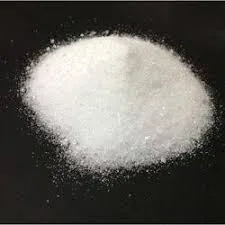Liquid cellulosic materials represent an innovative frontier in the world of bio-based products, bridging the gap between renewable resources and industrial applications. Derived from cellulose, a primary component of plant cell walls, these liquid forms offer a versatile medium for a variety of uses, from biofuels to bioplastics.
Cellulose itself is one of the most abundant organic polymers on Earth, providing structural support to plants. However, in its traditional form, cellulose is insoluble and difficult to process. This presents a challenge for industries looking to utilize plant biomass efficiently. The advancements in converting solid cellulose into liquid formulations have opened new doors for sustainable manufacturing processes.
The transformation of cellulose into liquid involves several methods, such as dissolution in ionic liquids or organic solvents, or through chemical modifications. One notable approach is the use of environmentally benign solvents, which allows for the preservation of cellulose’s structural integrity while enhancing its solubility. This process not only yields liquid cellulose but also opens up avenues for downstream applications, which include the production of fibers, films, and coatings.
Liquid cellulosic materials offer an exciting potential for the development of biofuels, specifically through the production of bioethanol. The fermentation of liquid cellulose allows for a higher yield of ethanol compared to traditional biomass conversion methods. This is particularly relevant in the pursuit of cleaner energy sources, as biofuels derived from cellulosic materials can significantly reduce greenhouse gas emissions.
liquid cellulos

Moreover, liquid cellulosic solutions contribute to the bioplastics revolution
. With the growing global concern over plastic waste, liquid cellulose can be converted into biodegradable plastic alternatives. These bioplastics not only reduce reliance on fossil fuels but also biodegrade more efficiently in the environment, thus mitigating plastic pollution.In the cosmetics and pharmaceutical industries, liquid cellulose is gaining recognition for its emulsifying and thickening properties, enhancing the performance of creams, lotions, and various formulations. Its biocompatibility and ability to be derived from renewable sources make it an attractive ingredient for products aimed at eco-conscious consumers.
However, while the potential of liquid cellulosic materials is immense, challenges remain in scaling up production and ensuring cost-effectiveness. Continued research and development are essential to optimize processing techniques and broaden the range of applications.
In conclusion, liquid cellulosic materials embody a promising step towards a more sustainable future. By harnessing the capabilities of cellulose in its liquid form, industries can move towards greener practices, elevate product performance, and contribute to a more circular economy.
-
The Versatility of Industrial Additives: Mhec, Hpmc, And Wall Putty SolutionsNewsMar.28,2025
-
The Importance of HPMC in Modern IndustriesNewsMar.28,2025
-
Partnering with Reliable Manufacturers for Optimal ResultsNewsMar.28,2025
-
Enhancing Construction Performance with Redispersible Polymer PowdersNewsMar.28,2025
-
Enhancing Construction and Household Products with Advanced AdditivesNewsMar.28,2025
-
Building Strong Foundations with Key Construction MaterialsNewsMar.28,2025






